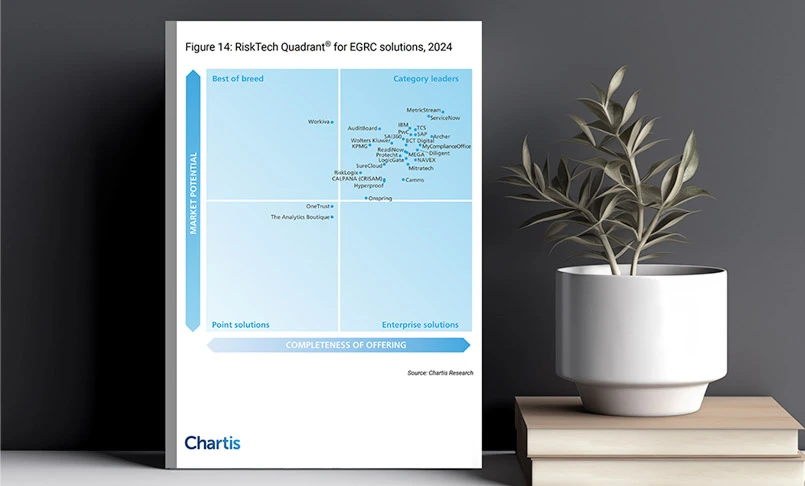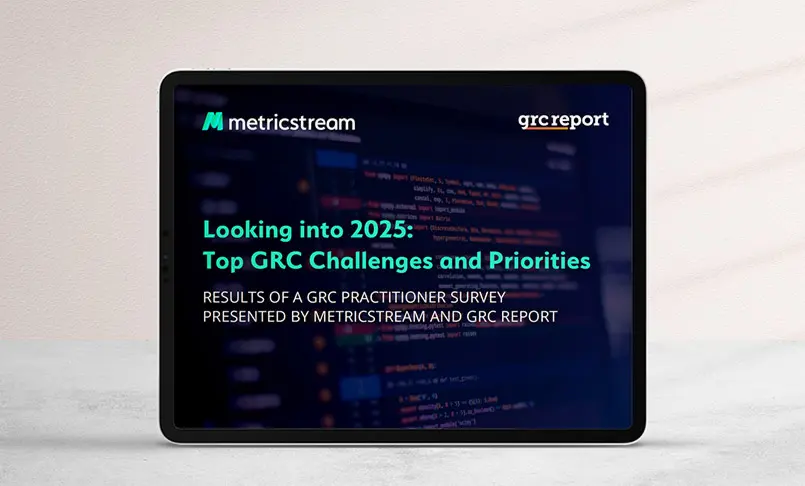Introduction
In today’s digital landscape, businesses are increasingly migrating to the cloud to enhance flexibility, scalability, and efficiency. However, with the shift to cloud services comes the responsibility of ensuring compliance with regulatory and industry standards.
Cloud compliance is not just about following laws — it is about protecting sensitive data, maintaining customer trust, and mitigating security risks. In this blog, we’ll explore the best practices that can help organizations stay compliant in the cloud, minimize risks, and ensure the security of data and operations.
Key Takeaways
- Cloud compliance is a process that requires organizations to align their cloud usage with relevant legal and regulatory standards. It involves setting up secure access controls, choosing compliant cloud services, monitoring operations, and responding to compliance issues proactively.
- Having a cloud compliance checklist ensures that all essential aspects are addressed,ranging from legal requirements and security to ongoing monitoring and incident response. Organizations should tailor this checklist to their specific regulatory needs and operational requirements.
- By following best practices like implementing strong governance frameworks, using cloud compliance management tools, and investing in training, organizations can build a robust, secure, and compliant cloud infrastructure that minimizes risks and meets regulatory requirements.
What is Cloud Compliance?
Cloud compliance involves ensuring that a company's use of cloud services adheres to required regulatory, legal, and industry standards. This includes protecting sensitive data and maintaining security practices that align with specific rules for cloud platforms like AWS, Azure, or Google Cloud, especially during data migration and storage.
How Does Cloud Compliance Work?
Cloud compliance works by ensuring that an organization’s use of cloud services aligns with all relevant legal, regulatory, and industry standards. This involves a combination of processes, tools, and policies to ensure that the data and operations within the cloud meet security, privacy, and governance requirements.
Here are some key ways cloud compliance generally works:
- Understanding Regulatory Requirements: Identify the regulations and standards organizations must comply with based on their industry, location, or the kind of data they handle. This could include regulations like GDPR, HIPAA, or PCI DSS.
- Shared Responsibility Model: Cloud compliance operates under a shared responsibility model between the cloud service provider (CSP) and the customer. The cloud provider is responsible for ensuring that their infrastructure meets security and compliance standards, while the customer is responsible for configuring the cloud environment accurately and managing data, applications, and access.
- Cloud Security and Access Control: Compliance involves implementing robust security measures, such as encryption, identity and access management (IAM), firewalls and monitoring.
- Data Location and Sovereignty: Some regulations dictate where data can be stored and processed. Companies must ensure that data hosted in the cloud complies with regional data sovereignty laws. This could be storing the data in specific geographical locations or using standard contractual clauses (SCCs) to manage cross-border data transfers.
- Continuous Auditing and Reporting: To maintain cloud compliance, organizations need to conduct regular audits and generate reports that show compliance with relevant standards. This means keeping logs and records of access and changes to the cloud environment for better auditing, or completing certifications to ensure compliance standards are met.
- Automation and Compliance Tools: Many cloud platforms provide compliance management tools to help automate tasks like real-time compliance monitoring, templates for compliance, and data loss prevention.
- Incident Response and Breach Reporting: Cloud compliance includes having a solid incident response plan in case of data breaches or security incidents. Regulatory frameworks often require organizations to report breaches within specific timeframes.
- Third-Party Vendor Compliance: If an organization uses third-party services integrated with their cloud environment, those vendors must also meet compliance requirements. It’s important to conduct due diligence on the compliance status of all partners.
Components of Cloud Compliance
Key aspects of cloud compliance include:
- Data Privacy & Security: Ensuring that sensitive data stored in the cloud is protected by laws like GDPR, HIPAA, or other data protection standards.
- Regulatory Requirements: Organizations must comply with industry-specific regulations. For example, in the financial sector, they might need to follow PCI DSS or SOX.
- Geographical Compliance: Different countries and regions have specific laws governing data storage and transfer, such as where data can be stored.
- Access Control: Implementing strict identity and access management to ensure only authorized users can access cloud data.
- Audit & Monitoring: Continuous auditing and monitoring to ensure compliance and identify vulnerabilities or non-compliance issues.
Cloud Compliance Checklist
A cloud compliance checklist helps ensure that any organization’s use of cloud services aligns with legal, regulatory, and industry-specific standards.
| Category | Key Actions |
|---|---|
| Regulatory & Legal Compliance |
|
| Data Protection & Access Control |
|
| Security Monitoring & Threat Management |
|
| Incident Response & Auditing |
|
| Third-Party & Vendor Management |
|
| Governance, Risk, & Training |
|
Importance of Cloud Compliance and How To Achieve It
Cloud compliance is crucial for several reasons including adherence to laws and regulations, ensuring the privacy and security of data, enhancing customer trust and boosting an organization’s reputation, maintaining operational efficiency, and managing risks effectively.
There are a few key steps to take to ensure that cloud compliance standards are achieved, including:
- Understanding Applicable Regulations: Identifying which regulations apply to the organization’s industry and understanding their requirements, followed by ensuring that the cloud provider has certifications that align with these regulations.
- Implementing Security Best Practices: Ensuring that all sensitive data is encrypted both at rest and in transit, using Identity and Access Management (IAM) to control who can access cloud data, and enforcing multi-factor authentication (MFA). In addition, there must be continuous monitoring and logging tools to track access and detect unusual activities.
- Data Sovereignty and Location: Ensuring data is stored in regions that comply with local data residency laws, and implementing safeguards for cross-border data transfers.
- Continuous Auditing and Reporting: Using automated compliance tools to track compliance in real-time and generate audit reports, in addition to conducting regular internal audits to assess potential vulnerabilities and non-compliance issues.
- Incident Response Plan: Develop a detailed incident response plan for handling security breaches, ensuring it complies with reporting timelines and testing the response plan periodically with simulations.
- Vendor Management: Conducting due diligence on third-party vendors to ensure they meet the same compliance standards, and setting up agreements with vendors outlining their compliance responsibilities.
Challenges of Cloud Compliance
Cloud compliance presents several challenges for organizations, primarily due to the dynamic nature of cloud environments and the complexity of regulatory frameworks. Some key challenges include:
- Shared Responsibility: In cloud environments, compliance responsibilities are split between the cloud provider and the customer. Issues on either side can lead to compliance gaps and security risks.
- Data Privacy and Sovereignty: Some regulations have strict rules about where data can be stored and processed. Ensuring compliance across multiple regions is complex, especially if organizations operate globally and rely on cloud services with data centers in various countries.
- Constantly Evolving Regulations: Regulatory landscapes are continuously changing. Keeping up with new laws and ensuring compliance can be overwhelming, which if ignored can lead to legal penalties, fines, and reputational damage.
- Complex Multi-Cloud and Hybrid Environments: Many organizations use a mix of public cloud, private cloud, on-premise infrastructures (hybrid) or rely on multiple cloud providers (multi-cloud). This makes managing compliance across different platforms more difficult.
- Data Access and Control: In the cloud, organizations must ensure that only authorized personnel have access to sensitive data. Misconfigurations, such as open cloud storage buckets, can lead to data breaches.
- Vendor and Third-Party Risk: Organizations often rely on third-party vendors and services integrated into their cloud infrastructure. Ensuring that these vendors comply with regulations adds another layer of complexity.
- Incident Response and Breach Reporting: Regulations like GDPR require that organizations report data breaches within strict timelines. Detecting and responding to incidents quickly enough to meet these requirements is difficult in dynamic cloud environments.
Cloud Compliance Best Practices
Here are some best practices for ensuring cloud compliance:
- Regular Assessments & Monitoring: Continuously assess risks related to data storage, access, and potential vulnerabilities within your cloud environment. Adapt compliance measures as new risks emerge. Use continuous compliance monitoring and automated auditing tools to detect non-compliance and security risks in real-time.
- Data Storage & Management: Encrypt sensitive data both at rest and in transit. Ensure proper encryption key management practices are in place. Establish clear policies for data retention and deletion based on regulatory requirements. Ensure that data is permanently deleted, including backups, when no longer needed.
- Enforce Identity and Access Management (IAM): Implement strong IAM policies, using the principle of least privilege, multi-factor authentication (MFA), and role-based access control (RBAC).
- Develop a Clear Incident Response Plan: Create and regularly update an incident response plan that defines how to detect, respond to, and report data breaches or security incidents. Ensure the plan aligns with regulatory requirements for breach notifications.
- Train and Educate Employees: Provide ongoing compliance and security training to employees to ensure they understand their role in maintaining cloud compliance.
Why MetricStream?
With changing digital needs and evolving regulatory requirements, it is more important than ever to stay ahead of the game when it comes to cloud compliance. Having a compliance tool that can manage all aspects of the process greatly improves an organization’s chances of success by building stakeholder trust and minimizing risks.
MetricStream’s CyberGRC product and IT and Cyber Compliance software enable companies to manage their cloud compliance processes in a holistic, proactive, and integrated manner.
To learn more, request a personalized demo today.
Frequently Asked Questions
How do we maintain cloud compliance?
For a company to maintain cloud compliance, it is important to implement strong governance frameworks and clarify the assignment of responsibilities. Organizations must continuously monitor regulatory updates and use compliance management tools, as well as invest in training, cloud security, and compliance expertise. Finally, it is crucial to choose cloud providers with strong compliance support and certifications.
Why do we need cloud compliance?
Cloud compliance is crucial for several reasons including adherence to laws and regulations, ensuring the privacy and security of data, enhancing customer trust and boosting an organization’s reputation, maintaining operational efficiency, and managing risks effectively.
What is an example of cloud compliance?
Some examples of cloud compliance frameworks include GDPR (EU), HIPAA (US), PCI DSS, SOC 2, and ISO/IEC 27001.
In today’s digital landscape, businesses are increasingly migrating to the cloud to enhance flexibility, scalability, and efficiency. However, with the shift to cloud services comes the responsibility of ensuring compliance with regulatory and industry standards.
Cloud compliance is not just about following laws — it is about protecting sensitive data, maintaining customer trust, and mitigating security risks. In this blog, we’ll explore the best practices that can help organizations stay compliant in the cloud, minimize risks, and ensure the security of data and operations.
- Cloud compliance is a process that requires organizations to align their cloud usage with relevant legal and regulatory standards. It involves setting up secure access controls, choosing compliant cloud services, monitoring operations, and responding to compliance issues proactively.
- Having a cloud compliance checklist ensures that all essential aspects are addressed,ranging from legal requirements and security to ongoing monitoring and incident response. Organizations should tailor this checklist to their specific regulatory needs and operational requirements.
- By following best practices like implementing strong governance frameworks, using cloud compliance management tools, and investing in training, organizations can build a robust, secure, and compliant cloud infrastructure that minimizes risks and meets regulatory requirements.
Cloud compliance involves ensuring that a company's use of cloud services adheres to required regulatory, legal, and industry standards. This includes protecting sensitive data and maintaining security practices that align with specific rules for cloud platforms like AWS, Azure, or Google Cloud, especially during data migration and storage.
Cloud compliance works by ensuring that an organization’s use of cloud services aligns with all relevant legal, regulatory, and industry standards. This involves a combination of processes, tools, and policies to ensure that the data and operations within the cloud meet security, privacy, and governance requirements.
Here are some key ways cloud compliance generally works:
- Understanding Regulatory Requirements: Identify the regulations and standards organizations must comply with based on their industry, location, or the kind of data they handle. This could include regulations like GDPR, HIPAA, or PCI DSS.
- Shared Responsibility Model: Cloud compliance operates under a shared responsibility model between the cloud service provider (CSP) and the customer. The cloud provider is responsible for ensuring that their infrastructure meets security and compliance standards, while the customer is responsible for configuring the cloud environment accurately and managing data, applications, and access.
- Cloud Security and Access Control: Compliance involves implementing robust security measures, such as encryption, identity and access management (IAM), firewalls and monitoring.
- Data Location and Sovereignty: Some regulations dictate where data can be stored and processed. Companies must ensure that data hosted in the cloud complies with regional data sovereignty laws. This could be storing the data in specific geographical locations or using standard contractual clauses (SCCs) to manage cross-border data transfers.
- Continuous Auditing and Reporting: To maintain cloud compliance, organizations need to conduct regular audits and generate reports that show compliance with relevant standards. This means keeping logs and records of access and changes to the cloud environment for better auditing, or completing certifications to ensure compliance standards are met.
- Automation and Compliance Tools: Many cloud platforms provide compliance management tools to help automate tasks like real-time compliance monitoring, templates for compliance, and data loss prevention.
- Incident Response and Breach Reporting: Cloud compliance includes having a solid incident response plan in case of data breaches or security incidents. Regulatory frameworks often require organizations to report breaches within specific timeframes.
- Third-Party Vendor Compliance: If an organization uses third-party services integrated with their cloud environment, those vendors must also meet compliance requirements. It’s important to conduct due diligence on the compliance status of all partners.
Key aspects of cloud compliance include:
- Data Privacy & Security: Ensuring that sensitive data stored in the cloud is protected by laws like GDPR, HIPAA, or other data protection standards.
- Regulatory Requirements: Organizations must comply with industry-specific regulations. For example, in the financial sector, they might need to follow PCI DSS or SOX.
- Geographical Compliance: Different countries and regions have specific laws governing data storage and transfer, such as where data can be stored.
- Access Control: Implementing strict identity and access management to ensure only authorized users can access cloud data.
- Audit & Monitoring: Continuous auditing and monitoring to ensure compliance and identify vulnerabilities or non-compliance issues.
A cloud compliance checklist helps ensure that any organization’s use of cloud services aligns with legal, regulatory, and industry-specific standards.
| Category | Key Actions |
|---|---|
| Regulatory & Legal Compliance |
|
| Data Protection & Access Control |
|
| Security Monitoring & Threat Management |
|
| Incident Response & Auditing |
|
| Third-Party & Vendor Management |
|
| Governance, Risk, & Training |
|
Cloud compliance is crucial for several reasons including adherence to laws and regulations, ensuring the privacy and security of data, enhancing customer trust and boosting an organization’s reputation, maintaining operational efficiency, and managing risks effectively.
There are a few key steps to take to ensure that cloud compliance standards are achieved, including:
- Understanding Applicable Regulations: Identifying which regulations apply to the organization’s industry and understanding their requirements, followed by ensuring that the cloud provider has certifications that align with these regulations.
- Implementing Security Best Practices: Ensuring that all sensitive data is encrypted both at rest and in transit, using Identity and Access Management (IAM) to control who can access cloud data, and enforcing multi-factor authentication (MFA). In addition, there must be continuous monitoring and logging tools to track access and detect unusual activities.
- Data Sovereignty and Location: Ensuring data is stored in regions that comply with local data residency laws, and implementing safeguards for cross-border data transfers.
- Continuous Auditing and Reporting: Using automated compliance tools to track compliance in real-time and generate audit reports, in addition to conducting regular internal audits to assess potential vulnerabilities and non-compliance issues.
- Incident Response Plan: Develop a detailed incident response plan for handling security breaches, ensuring it complies with reporting timelines and testing the response plan periodically with simulations.
- Vendor Management: Conducting due diligence on third-party vendors to ensure they meet the same compliance standards, and setting up agreements with vendors outlining their compliance responsibilities.
Cloud compliance presents several challenges for organizations, primarily due to the dynamic nature of cloud environments and the complexity of regulatory frameworks. Some key challenges include:
- Shared Responsibility: In cloud environments, compliance responsibilities are split between the cloud provider and the customer. Issues on either side can lead to compliance gaps and security risks.
- Data Privacy and Sovereignty: Some regulations have strict rules about where data can be stored and processed. Ensuring compliance across multiple regions is complex, especially if organizations operate globally and rely on cloud services with data centers in various countries.
- Constantly Evolving Regulations: Regulatory landscapes are continuously changing. Keeping up with new laws and ensuring compliance can be overwhelming, which if ignored can lead to legal penalties, fines, and reputational damage.
- Complex Multi-Cloud and Hybrid Environments: Many organizations use a mix of public cloud, private cloud, on-premise infrastructures (hybrid) or rely on multiple cloud providers (multi-cloud). This makes managing compliance across different platforms more difficult.
- Data Access and Control: In the cloud, organizations must ensure that only authorized personnel have access to sensitive data. Misconfigurations, such as open cloud storage buckets, can lead to data breaches.
- Vendor and Third-Party Risk: Organizations often rely on third-party vendors and services integrated into their cloud infrastructure. Ensuring that these vendors comply with regulations adds another layer of complexity.
- Incident Response and Breach Reporting: Regulations like GDPR require that organizations report data breaches within strict timelines. Detecting and responding to incidents quickly enough to meet these requirements is difficult in dynamic cloud environments.
Here are some best practices for ensuring cloud compliance:
- Regular Assessments & Monitoring: Continuously assess risks related to data storage, access, and potential vulnerabilities within your cloud environment. Adapt compliance measures as new risks emerge. Use continuous compliance monitoring and automated auditing tools to detect non-compliance and security risks in real-time.
- Data Storage & Management: Encrypt sensitive data both at rest and in transit. Ensure proper encryption key management practices are in place. Establish clear policies for data retention and deletion based on regulatory requirements. Ensure that data is permanently deleted, including backups, when no longer needed.
- Enforce Identity and Access Management (IAM): Implement strong IAM policies, using the principle of least privilege, multi-factor authentication (MFA), and role-based access control (RBAC).
- Develop a Clear Incident Response Plan: Create and regularly update an incident response plan that defines how to detect, respond to, and report data breaches or security incidents. Ensure the plan aligns with regulatory requirements for breach notifications.
- Train and Educate Employees: Provide ongoing compliance and security training to employees to ensure they understand their role in maintaining cloud compliance.
With changing digital needs and evolving regulatory requirements, it is more important than ever to stay ahead of the game when it comes to cloud compliance. Having a compliance tool that can manage all aspects of the process greatly improves an organization’s chances of success by building stakeholder trust and minimizing risks.
MetricStream’s CyberGRC product and IT and Cyber Compliance software enable companies to manage their cloud compliance processes in a holistic, proactive, and integrated manner.
To learn more, request a personalized demo today.
How do we maintain cloud compliance?
For a company to maintain cloud compliance, it is important to implement strong governance frameworks and clarify the assignment of responsibilities. Organizations must continuously monitor regulatory updates and use compliance management tools, as well as invest in training, cloud security, and compliance expertise. Finally, it is crucial to choose cloud providers with strong compliance support and certifications.
Why do we need cloud compliance?
Cloud compliance is crucial for several reasons including adherence to laws and regulations, ensuring the privacy and security of data, enhancing customer trust and boosting an organization’s reputation, maintaining operational efficiency, and managing risks effectively.
What is an example of cloud compliance?
Some examples of cloud compliance frameworks include GDPR (EU), HIPAA (US), PCI DSS, SOC 2, and ISO/IEC 27001.








